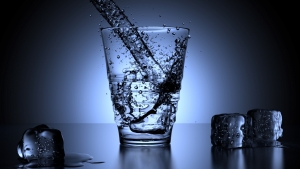"Don't worry, you'll be as good as new after I give you this massage (a common Costa Rican practice known as "sobar")," a boy's grandmother tells him after a few days of heavy eating (and not exactly fruits!). After the "sobada" and after taking a laxative, the young man starts feeling better. This practice is so common in Costa Rica that many people give credit to its benefits. But are old wives' tales and common beliefs really true?
Modern medicine has resulted from the need and desire to cure illness in order to procure health. Unlike traditional beliefs or practices, it is the product of formal research and extensive testing. However, throughout the world, people believe in and practice many common beliefs because for them they are the "fastest, easiest and most inexpensive" way of healing.
Here we clarify some popular old wives' tales and beliefs:
 |
|
1. Belief: Traditional beliefs to avoid getting pregnant range from going around the bed three times before having sex to inserting intra-vaginal sponges, not eating onions, not sitting on dirty toilet seats or drinking coconut water after sex.
Fact: NONE of these beliefs work. A woman may become pregnant when she has sex during the fertile days of her cycle (while she is ovulating). There are several birth control methods to prevent pregnancy: barrier contraceptives (such as male and female condoms or diaphragms), hormonal contraceptives (such as oral contraceptive pills) and natural family planning or the rhythm method (which includes not having sex on the days women are most fertile), among others. Always keep in mind that none of these are 100% safe. Furthermore, none of the above myths will protect you against sexually transmitted diseases (STD). |
2. Belief: Place egg whites, talcum powder, cold flour, tomato paste, butter, ground coffee, soil, lard, toothpaste, oil, aloe vera or honey over a wound or burned area.
Fact: When a wound or burn occurs, NEVER apply ANY home remedy or substance over it; these will have to be removed when providing medical care and will only cause more pain and delay treatment. Depending on the way the injury was inflicted and the object that caused it, different skin or muscle layers may be exposed. Therefore, if you place anything over the burned area or wound, you will only increase the risk of infection! First aid measures that should be implemented immediately, especially over a burn, are: place the affected area under COOL RUNNING water for 5 minutes, remove anything that's in contact with the area, cover it with a clean, dry sheet or cloth and seek medical care immediately at the nearest hospital or clinic.
 |
|
3. Belief: Drinking ice cold water will make you fat because the ice cools and hardens body fat.
Fact: False. Although cold water may hinder the digestion process by slowing it down, including fat digestion from the foods we eat, what makes us gain weight is not cold or hot water, but our fat, sugar and carbohydrate-loaded diets. |
4. Belief: If a pregnant woman goes outside when there is full moon or during an eclipse, her baby will have birthmarks or spots on its skin.
Fact: False. Skin spots, birthmarks or hemangiomas are in no way related with lunar activity.
 |
|
5. Belief: If a woman cuts her hair, touches steel scissors or opens the refrigerator during the 40-day period after giving birth, her breast milk will dry up.
Fact: False. None of the above situations will cause your body to stop secreting breast milk, preventing you from continuing to breastfeed. A woman will stop producing breast milk once she stops lactating and the stimulus is halted, or through pharmacological treatment. |
6. Belief: To cure hiccups, place a thread or a moistened piece of paper over the affected person's forehead.
Fact: False. A hiccup is an unintentional and repetitive spasm of the diaphragm. A thread or a piece of paper on the forehead will not alter or influence the diaphragm in any way. However, a respiratory effort or getting startled or scared by someone will cause the diaphragm to contract quickly, thereby interrupting the spasms and making the hiccups go away.
7. Belief: To cure asthma in children, rub their chest with chicken fat, wrap them in paper or newspaper and do not bathe them the next day. They can also be given fresh blood from howler monkey eggs.
Fact: False. None of these remedies will cure asthma. Since this disorder is characterized by chronic inflammation of the airways that causes breathing difficulty, its treatment is quite complex as it must encompass many pathological mechanisms. Nonetheless, this does not mean that rubbing children with some kind of ointment will not help improve some of the symptoms associated with asthma.
|

